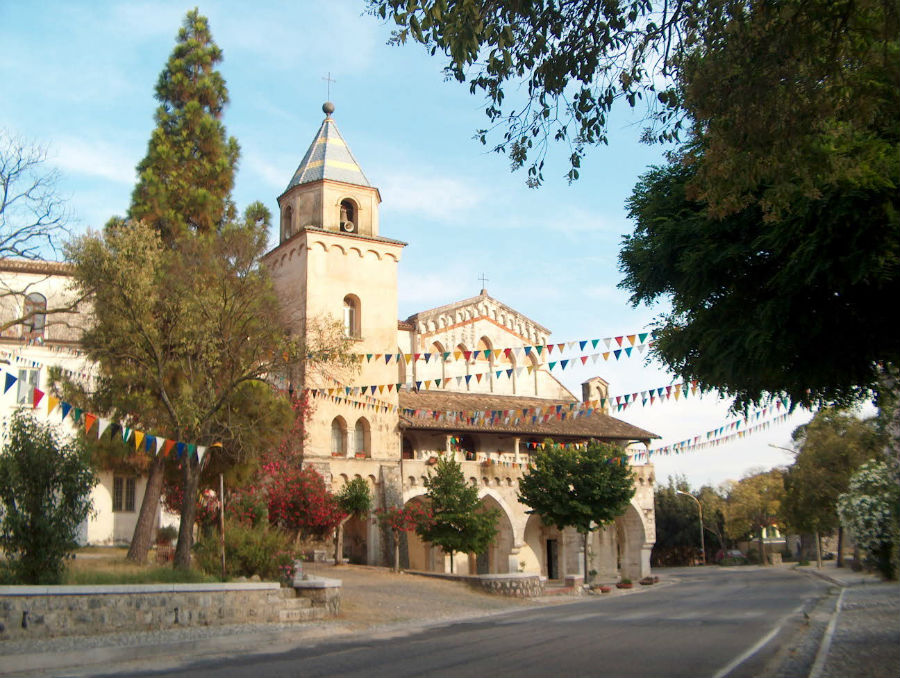The Sanctuary of Our Lady of the Plan (or of theFratte) of Ausonia was built in the XV century on a structure of the XII c. In 1954 were carried out the restoration of the damage wrought by the Second World War. The foundation of the church dates back to 1100, when it was constructed on the site of an ancient pagan temple,perhaps of the goddess harmony, to keep you a statue in polychrome wood of the Madonna col Bambino, coming from the nearby Castro dei Volsci, according to tradition, the statue would have remained miraculously in this Sanctuary, despite the efforts of castrensi of riprendersela. In remembrance of these ancient events takes place every three years a ceremony of symbolic meeting and common ground between the two nationalities, on the occasion of the feast of Our Lady of the plan. The church is of Romanesque style, but was heavily redone during the Renaissance period, with numerous subsequent interventions in six-eighteenth century. The big porch outside was made in the course of the work for the first enlargement. It is a testimony to the lettering on the first pillar on the right hand side, showing the date of construction, 1448. The bell tower, instead, together with the crowning of the temple are modern opera, made by Gustavo Giovannoni in 1927.
Next to the sanctuary there are the ruins of the ancient baptistery destroyed by the last war and probable remains of the ancient Ausona. The sanctuary holds the tomb of humanist poet Elisio Calenzio. Next to the church stands the building that was the first hospital for pilgrims and then converted into an orphanage of the Ave Gratia Plena. The portal of the Church presents two imposing flying in wood of the XVIII century, richly decorated in relief. Inside, of remarkable interest is the sacristy, which has an exceptional floor to Neapolitan majolica of the eighteenth century, and a polyptych of 1531 performed by Gian Filippo Criscuolo, that represents the theme of the Dormition of the Blessed Virgin, narrated in the Legenda Aurea by Jacopo da Varazze, according to which the virgin does not die, but falls asleep for three days after which is taken directly into Heaven. Very interesting is also the underground crypt, unique witness remained of the medieval period, which is accessed through two steep stairs. The excellent cycle of frescoes inside represents the life and story of the miracle of Santa Remicarda. According to a handwritten record of 1709, in 1100 the Madonna appeared to a shepherdess named Remingarda guarendola, from his physical deformity. On the place of the miracle was immediately built a church whose crypt was readily decorated with a cycle of frescoes that recounted the miracle. In the two lateral chapels, frescoes, rovinatissimi, respectively show Christ between the apostles and the stories of S. John.



